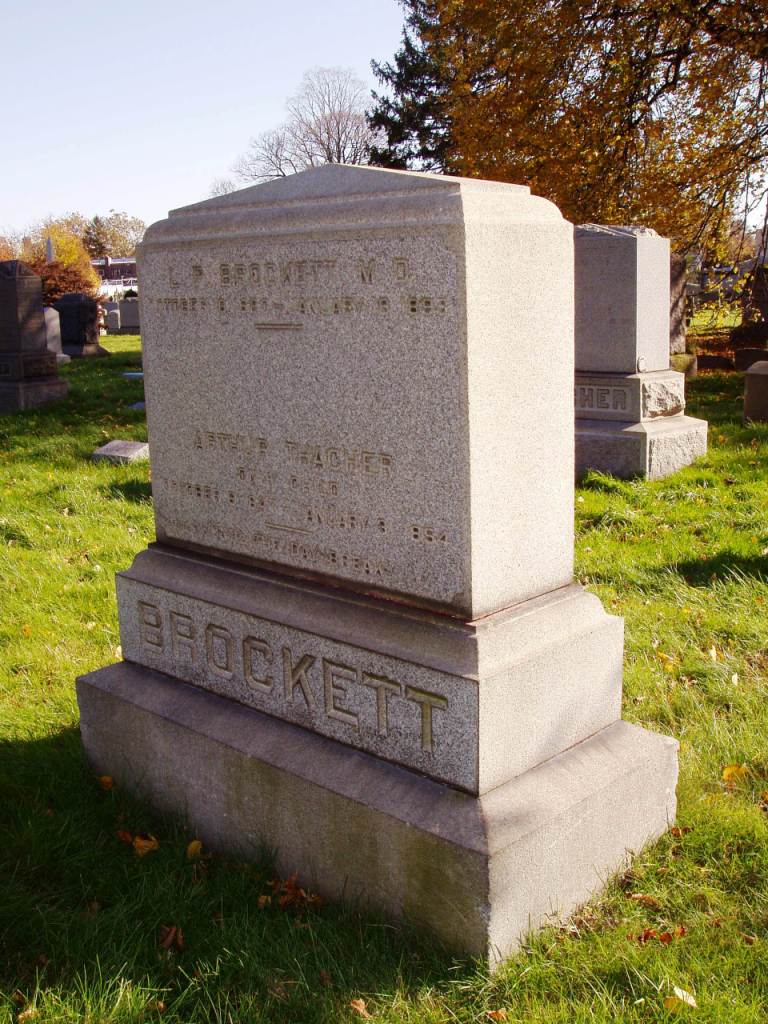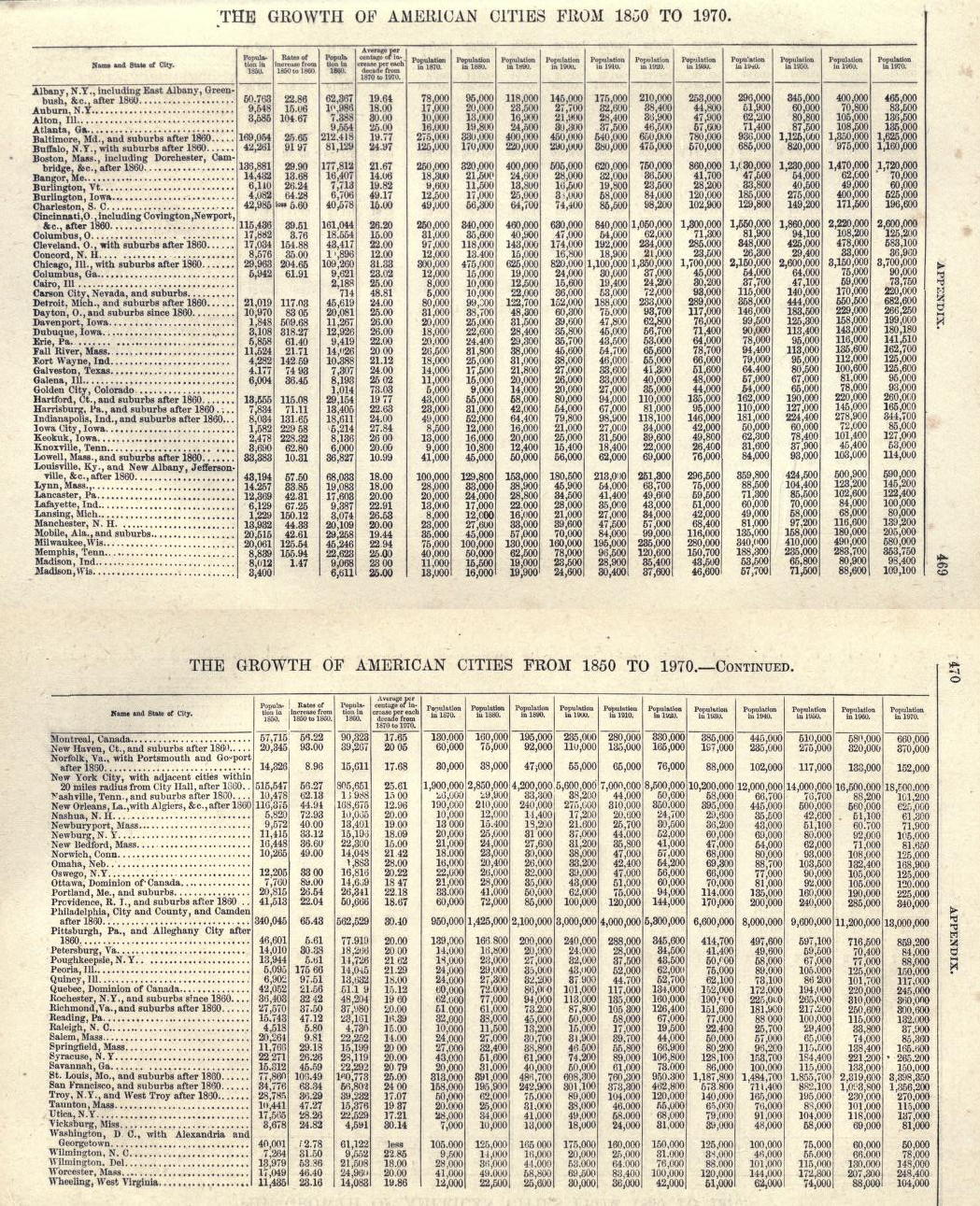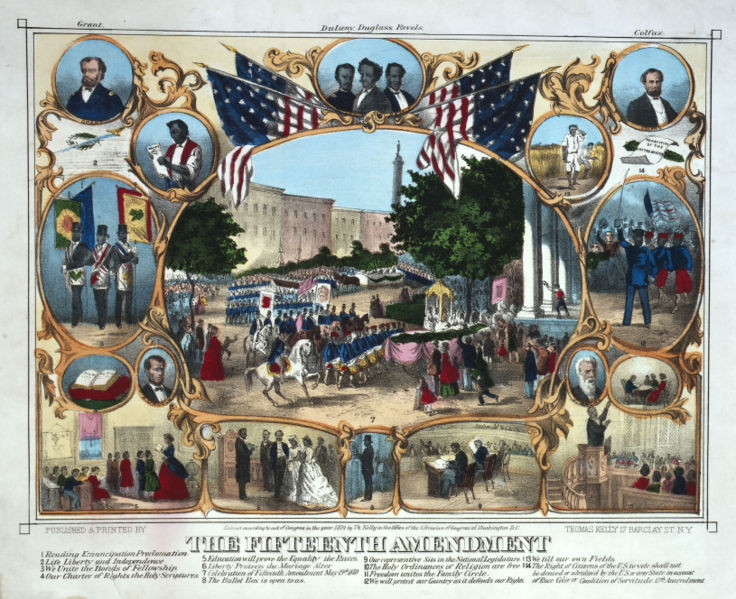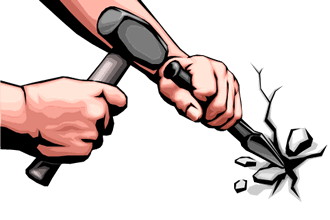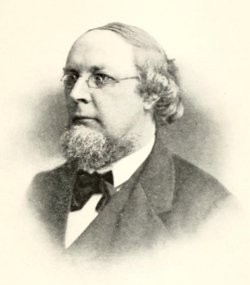
Linus Pierpont Brockett (1820-1893) was a medical doctor, turned author, who cranked out over 50 books on various social topics. He authored predictions, in 1870, of the state of the country in 1970. Click for a biographical synopsis.
A century is a tidy period. We stare back at the previous one, and imagine the next. Our gazing conjury might be intended to teach a lesson, raise an alarm, claim a legacy, or rub a little glory off the justly famous. "One Hundred Years' Progress of the United States," written, as it says, by "Eminent Literary Men," does all these things, and more. It collects compound interest on its balance with an appendix modestly titled, "Marvels that Our Grandchildren will see; One Hundred Years' Progress in the Future," in which it peeks forward to our recent past with fearless, even "scientific," predictions of the year 1970. The author of these "highly probable" future scenes was a prolific author of nineteenth century America; a keeper of the popular widsom, L. P. Brockett (1820-1893).

"The vast improvements made in Agriculture; cultivation of cotton and sugar; commerce; travel, and transportation; Steam Engine;"...with an Appendix entitled "Marvels That Our Grandchildren Will See" starting on page 460.--Published 1871.
In 1870 the nation staggered dazedly away from the Civil War. Farmers were 53% of the labor force. By 1970 they were about 2%. the nation changed in ways now familiar. At that time popular wisdom was anchored in notions we now find repulsive on their surface, and bewildering on inspection. We have the advantage over the learned of that age, because we can look back on their deeds, and imagine we know them. Their most valiant efforts to see us were mostly ludicrous, if viewed as prophecy, but very telling if viewed as introspection. What we humans take for the future is usually a mirror.
The main text tells us in detail how amazed people were in 1870 at what the previous century had wrought, and rightly so. They'd gone from the scythe and shovel plow to the steam tractor. From backwater colonies to economic champion. From game trails to transcontinental railroads. Such marvels there had been, and with a promise of much more.
Louis Pierpont (L. P.) Brockett, MD, the book's prophet, was a popular writer of the nineteenth century, an educated man, a man of letters, a man of intellectual gifts. He foresaw many things not mentioned in other predictions of the period: "a new motive-power," to replace the steam engine, "some practical mode of aero-locomotion," "new textile fibres," "new materials" replacing wood, stone, leather, and metals. There would be color photography, "sonographs" of entire speeches, and a canal across the "Isthmus of Darien." He lept forward one-hundred years and gave us "the history of a day in 1970."
Who was this man who saw so much in his own reflection? Brockett was one of those amateur polymaths of the nineteenth century who rode a wave of prominence during the reconstruction period, when the government took a nap and the nation reinvented itself. He sank beneath a few lingering bubbles as the twentieth century deluged the certainties of his age. We are able to envision a sketch of him from short biographies published by the New England Historic Genealogic Society, and by Yale Medical School, from which he graduated in 1843. He was Protestant, highly Protestant we should say, opinionated, intelligent, and, like the men of letters of any age, conflicted about his world.
Dr. Brockett was certain of many things, religion, race, morality, and social order. He was doubtful about many things, religion, race, morality and social order. He explains a lot we need to know about what brought us to this moment, and his look into the future illuminates his moment. He viewed the United States as a place destined to the "admixture" of the world's various races. He wavered between reluctant acceptance of this fact, and the horror it implied to him. He saw the clamor for woman suffrage as an aberration, which he compared to the French Reign of Terror.
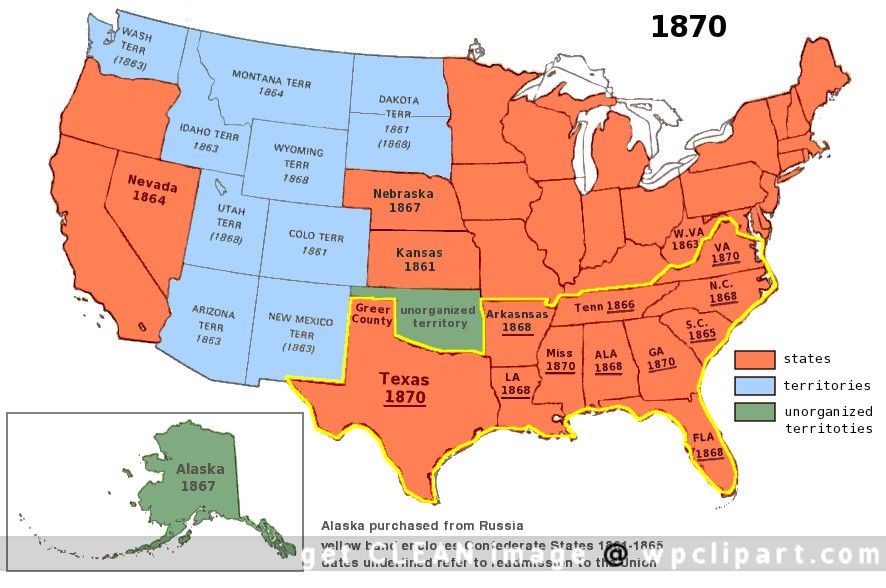
In 1870 the nation looked much as it does now, except that 12 of the future states were still territories. Notice the Dakota territory had not yet been divided, north and south. Alaska was ignored on this map, and largely ignored by the smart money of the time. Hawaii was an independent kingdom. Click the picture for a larger view in a separate window.
His opinions on race and women, common to his time, are repugnant to ours. Yet, he was more complicated than the average bigot. Don't suppose he was some Dixie Cracker, or vanquished cavalier lamenting the lost cause. He supported the abolition of slavery, and the fair treatment of ex-slaves. He championed the heroism of American women. One of his most often cited books was, "Women at War: A Record of Their Patriotic Contributions, Heroism, Toils, and Sacrifice During the Civil War." He championed universal education, equal for boys and girls. His prejudices were repulsive, but not hateful. Hate does not always accompany bigotry. Today we might call him fiercely paternalistic. If we hope to understand our own age, it is important to recognize him as a conduit through which it has arrived.
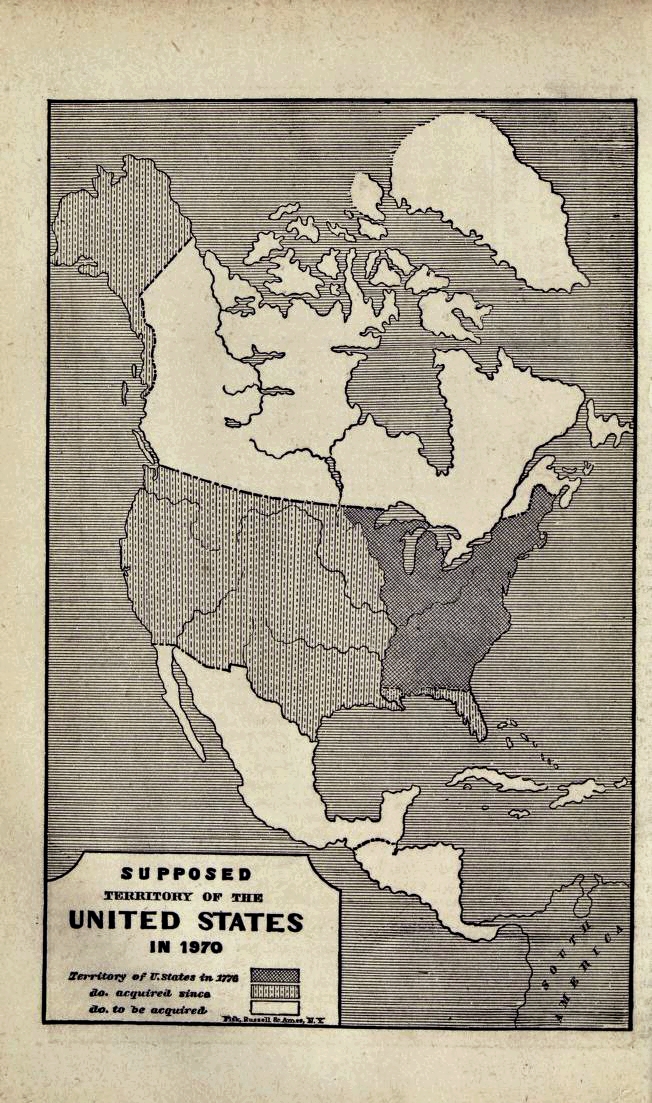
Brockett assumed the United States would come to include the entire North American and South American Continents. He disparaged the acquistion of Alaska, echoing the popular wisdom, and saw no future in it. Click for a larger image in a separate window.
What did Brockett foresee? He gives us several pages of ruminations, a laundry list of predictions intertwined with his moral vision, and he ends with a day in the life of a family in 1970. Some items in the laundry list are prescient; most are laughably off the mark. His 1970 scenario suggests he didn't really believe much of what he predicted, or at least couldn't grasp the implications of his predictions. It also suggests his glance at the future suffered from his poor understanding of what was happening in his own time. Does that sound familiar?
He starts with some generalities before going to statistics, which he assures us are scientifically prepared, and highly probable. His method seems to have been linear extrapolation. Brockett foresaw the United States encompassing the entire American Continent, north and south, and surrounding islands. The number of states would grow to 100. Some of this territory would be annexed through mutual agreement, Canada and Mexico, some through purchase, and some through conquest. He fretted about "the admixture" of races to be involved, but thought it would be worth it. Society would be greatly altered. For his statistics, he tells us he speaks only of the territory then included in the United States, but it is not clear he stuck to this.
Brockett sees a population of 474 million by 1970, over estimating by 271 million. He estimates revenue of the federal government at $10 billion, low by a factor of about 19. Other estimates of industrial production are similarly bizarre, demonstrating the fallacy of extrapolating numbers without some underlying idea of mechanism. Even where he saw the mechanism, he couldn't see its implications. He predicts a new "motive force," for trains and carriages, but still estimates the need for horses in 1970 at 97 million, and for mules, 14 million. The actual numbers were 3.5 million, and 100,000. In step with this prodigious use of horsepower, Brockett overestimates the corn and oats required to feed them by proportionate amounts. He supposes saddle and harness making will continue to grow, becoming a 450 million dollar industry by 1970. In fact it became a cottage industry of a few private artisans.
Horse estimates notwithstanding, Brockett carries his prediction of new motive forces into general transportation, and makes an estimate of the transportation economy, by whatever means. He doesn't ever quite get around to the idea of the horseless carriage. He considered carriages to be strictly luxury items of no great consequence for transit of the masses. He recons the velocipede might grow in use, but mostly concentrates on rail travel. All these transportation methods, he estimates, will have grown to a 950 million dollar industry by 1970. In fact, over 10 million automobiles alone, disregarding all other modes of transportation, were sold in America in 1970, at a minimal value of 20 billion dollars. Even factoring for inflation, this puts Brockett's 950 million figure in the "oh dear" category.
At last we get to his vision of the family of 1970. It is a multiracial (Anglo-Saxon and Spanish admixture, as he calls it) family, living in a fictional city apparently near present-day Denver. Otherwise, it is a transplantation of nineteenth century life into the next century, servants and all, with some gee-whiz fast trains, hourly newspapers, and freight delivery via pneumatic tubes.
Brockett's description of his future businessman's day, driven apparently by agriculture and mining, is a ludicrous imagining of what business executives do with their time. Brockett did not understand how business would change, or the things business leaders actually do. His 1970s executive is a cartoon-paced version of Bob Cratchit, probably because Brockett got his business sense from Dickens. The children are in school; the wife invisible.
Some final observations are needed for completeness. He despaired of Congress, and in particular the Senate, which he foresaw falling into a tumble of brawling partisans, a condition that would be made worse by woman suffrage.
He deplored the trend away from heavyweight literature, such as his writing, and toward the hasty scribbling of journalists, which he believed reduced the attention span of the citizenry, and seduced them into a sensationalist, overly emotional consideration of life. (Today we despair the loss of journalism to social media for the same reasons.)
We cannot read his condescending paragraphs on the likely increase in "private expenditure" without visualizing the college sophomore of our own time, preaching the evils of his "consumerist society." Does that young student, intent on raising the alarm about just received secrets, realize he echoes the rants of nineteenth century, racist, sexist academics about the "constant accessions to the class of the vulgar rich?"
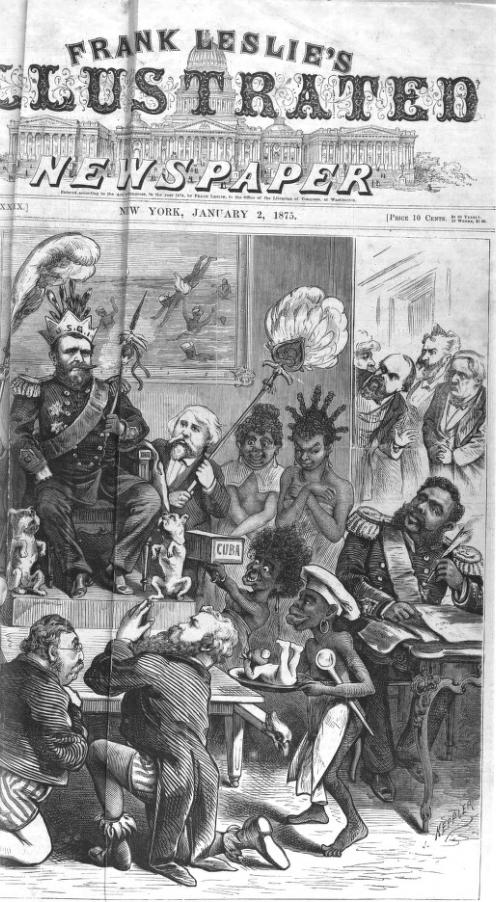
If you'd like to step back into the temperament and sense of America in 1870, take a deep breath, and click the above picture for some copies of "Frank Leslie's Illustrated Newspaper" from 1875.
Brockett thought it a near certainty there would be no major wars involving the United States for the next 100 years. He didn't square the expansion of the nation, over the entire continent, with this assumed lack of strife. Was his warless prediction simply the angst nurtured by the post-war generation, that they would never have the chance for glory enjoyed by their parents who had triumphed in the war of secession? We know this worry motivated leaders of that time, and we know it sent many of them rushing to Cuba, and later to France, to get there before the last war was over forever. It engendered such phrases as "a splendid little war," and such adventures as San Juan Hill. Perhaps it also affected a religious crusader of apparently fragile health who longed to see into the future.
It's best to leave Dr. Brockett here. If you want a quick primer on the underpinnings of social leadership during the reconstruction era, his predictions of the future are the best guide you are likely to find.
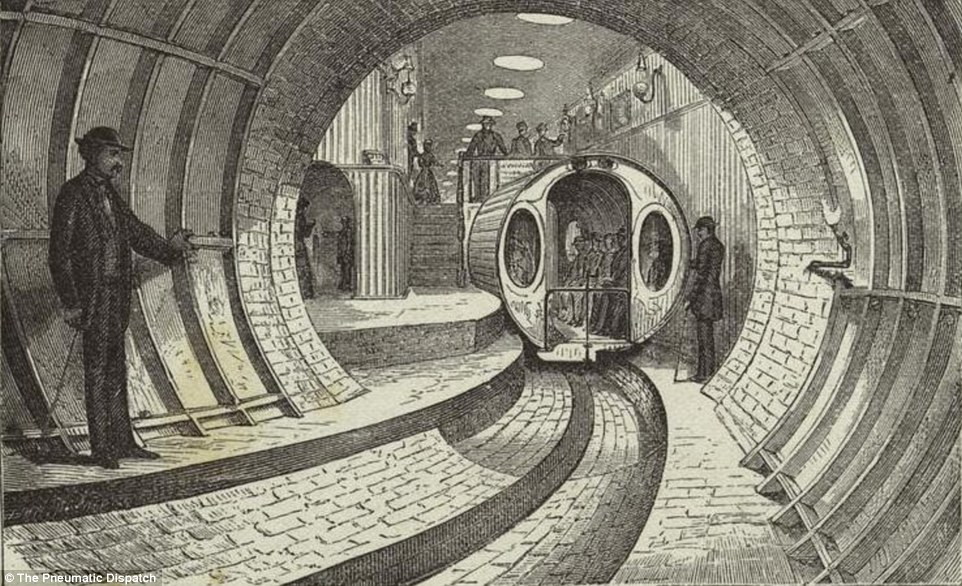
Brockett's predictions can be found in the pages of 1870 publications. His notions about pneumatic tubes, and something like the current hyperloop concept, were in vogue with elite thinkers. The picture links to the Scientific American edition for March 5, 1870.
What ideas influenced Brockett's predictions? Brockett was a repository of conventional ideas. He was not a futurist, but a reader. The Scientific American, among other popular sources, provided the work of the great thinkers of the era, and Brockett absorbed them, as we absorb our culture. At the beginning of his dissertation he tells us of three major problems facing the nation over the next century. War, was not one of them. Neither was what he called "the negro and his condition of slavery."
Brockett believed the social questions surrounding the practice of slavery had been settled by the Civil War. He doesn't mention the 15th Amendment. This is a remarkable oversight, since it was the last of three constitutional amendments wrestling with the social questons he believed settled. In 1869, when he was probably writing his predictions, it was before the states for the ratification that came in early 1870. It did not resolve all problems. He clearly did not see where this "closed" issue was heading, even in his immediate future.
The three important issues Brockett believed would shape the next century were, (1) "The social and political status of woman, and the position she will occupy in the government of the nation. 2d, the liquor question", and " 3d. The Chinese question." The latter involved the debate of citizenship status for Asian immigrants and has been a major topic of jingo journalism and politics right down to our time. The first we recognize as the motivation for the 19th Amendment, and the second for the 18th.
Brockett predicted a few amazing, life-changing advances in technology, but foresaw no social impacts from their assimilation into society. Thus, he was able to visualize life in 1970 as an extrapolation of 1870 habits onto a faroff landscape, as if he and his contemporaries were going to a sort of Disney World of the Future for a day. His vision of the future is like a man groping behind himself as he walks forward through the dark. Can you hear those chuckles coming from the year 2118?
Background
Brockett, Linus Pierpont was born on October 16, 1820 in Canton, Connecticut, United States. Son of Review Pierpont and Sarah (Sage) Brockett.
Education
Attended Connecticut Literary Institute, Suffield, also Brown U. Graduated from Yale Medical School, 1843.
Career
With Hartford (Connecticut) publishing house, various times, 1847-1857. Appointed commissioner to investigate idiocy in Connecticut, 1854, published findings, 1856. Moved to Brooklyn, 1860.
Editor Brooklyn Monthly, Brooklyn Advance. Intense Union supporter. Author approximately 50 books including: The History and Progress of Education, 1860.
The Life and Times of Abraham Lincoln, 1865. Women’s Work in the Civil War, 1867.
Works
• Author approximately 50 books including: The History and Progress of Education, 1860. The Life and Times of Abraham Lincoln, 1865. Women’s Work in the Civil War, 1867.
New England Historic Genealogical Society
LINUS PIERPONT BROCKETT, a Corresponding Member from 1847, was born in Canton, Connecticut, October 16, 1820, and died in Brooklyn, New York, January 13, 1893.
He was educated in the Connecticut Literary Institution, and at Brown University. He was graduated from the Yale Medical School in 1843, and continued a number of years in the practice of medicine. His physical strength was not sufficient for the exacting work of his profession, and he turned aside to the pursuit of literature. From 1847 to 1857 he was in the publishing business in Hartford. In 1854 he was appointed a commissioner by the State of Connecticut to investigate the condition of idiots, and the best methods of dealing with them. This occupied him two years. From 1856 he was connected with several religious papers. He published more than forty distinct works on biographical, geographical, historical, literary, and religious subjects. He contributed toward the first edition of the "American Cyclopaedia." He wrote a "History of the Civil War;" "Woman's Work in the Civil War;" and "Men of Our Day," 1868. He was one of the leading contributors to the "New Encyclopaedia of Missions." His largest usefulness was in connection with Christian Missions in foreign lands. Amherst College conferred upon him the degree of Master of Arts in 1857.
Yale, Medical School, Class of 1843
LINUS PIERPONT BROCKETT was born in Canton, Conn., on October 16, 1820, the son of the Rev. Pierpont Brockett, a Baptist minister. He was a member of Brown University in the class of 1841, but left in Sophomore year on account of delicate health. He studied medicine in Washington, D. C., and in the College of Physicians and Surgeons in New York, as well as here. His residence at the time of graduation was in Lyme, Conn.
He soon abandoned the practice of his profession, and from 1847 to 1857 he was engaged in the publishing business in Hartford, Conn. In 1857 he received the honorary degree of Master of Arts from Amherst College. His later life was spent in Brooklyn, N. Y., and was filled with literary work. During these years he published some fifty volumes, on a wide range of subjects. He died in Brooklyn, on January 13, 1893, in his 73d year.
sefulness was in connection with Christian Missions in foreign lands. Amherst College conferred upon him the degree of Master of Arts in 1857.


Back to the Attic
